How do you store your music? Vinyl? CD? Cassette tapes? PC?
If you are using digital media, you’ll use a DAC. Depending on how you store your music, this will have a bearing on how you interface this digital data out. Every format has its pros and cons, so let’s have a look here.
For digital media, to my knowledge, you have 3 choices today. SPDIF, USB and Firewire.
SPDIF is the de facto standard digital output. It’s available on CD/DVD players as “Digital Output”. Many media players like the Squeezebox has this too, as well as many PC soundcards. SPDIF even has an optical version, Toslink. A sonic upgrade can be experienced instantly if you ditch the lousy RCA socket and opt for BNC. Why oh why does everyone still use RCA then? For convenience rather than sonic reasons!
A major problem with SPDIF is that the SPDIF receiver in your DAC got to retrieve the clock signal from the incoming SPDIF. And this is a major problem. The older but still very popular obsolete CS8414 has a typical 200ps while the modern DIR9001 manages much better at 50ps. Irrespective of what comes after this, the fact that the recovered clock isn’t optimum will have a huge bearing on sonics later.
USB DAC is really popular these days. The most popular implementation is Texas Instrument’s PCM27xx chips. These are pretty good “as is” but still a lot can be improved on. Again, there is the question of how is the clock recovered?
There are better implementations of USB which do not use TI’s generic PCM27xx chips but I haven’t tried these yet.
Firewire is said to be the best but far from readily available. And too expensive at this point.
Which interface to use also depends on what is your source. If you are using CDs, SPDIF is most logical solution. If you store your music on hard disk, then USB or I2S via a SD card player is viable. The above briefly describes the pros and cons while the convenience of which format is really up to you. If you don’t mind a little trouble, go for the best sound!
My current favourite, however, isn’t any of the above. It’s via I2S! Provided you have a very good I2S source!
I started dabbling with I2S when I tapped out this signal from my old Marantz CD63 way back in 2003. The CDM12 transport isn’t that great and though the sound was already a huge improvement over SPDIF, there is still something lacking there. But hey, if you could ditch SPDIF, try this!
Later I played around with USB-I2S as well as USB-I2S-EIAJ in USB Monica. As good as all these sound, it’s still not a pure I2S solution. The interface is still via USB. You could say the weak link is how the PCM27xx chips derive the I2S out. I hope to have the resources to tackle a better way of doing USB one day…
Anyway, my current favourite digital player (The Digital Turntable) has, in my mind, the most direct route to I2S. A DSP chip reads WAV file data from a non-moving media (the SD card), then outputs I2S signal which is fed to a CS8405 chip to generate SPDIF. Both the DSP chip and CS8405 is clocked by a low jitter clock.
Since a good quality I2S is available, feeding directly to an I2S DAC chip (or through Black Crow for an EIAJ DAC chip) is all we need! Replacing the clock with a lower jitter implementation (like Kwak clock below or the plug-n-play Tent XO module) and I assure you your jaw will drop listening to music through this combo!
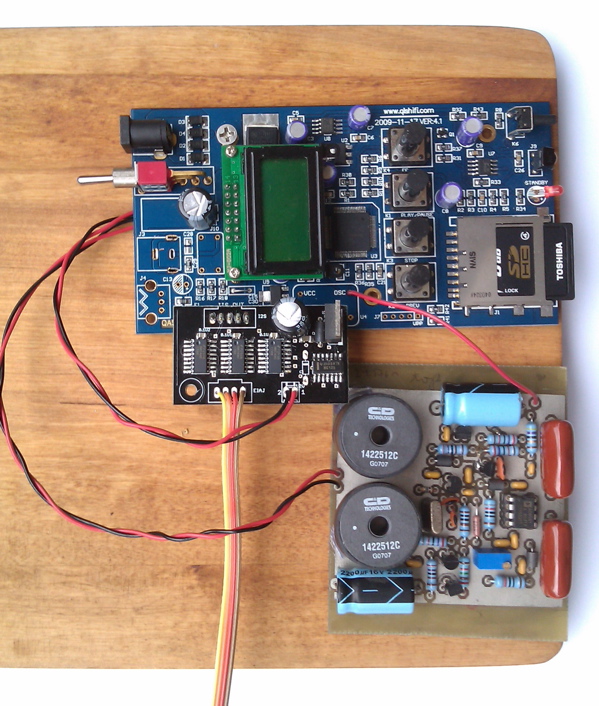
Okay, okay, enough about all this. So these are what we have here.
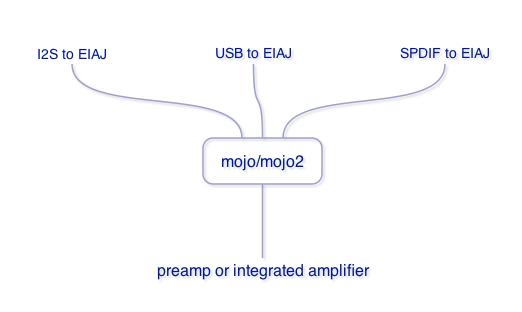
Above pics show the 3 implementation, coupled to mojo. They’ll couple nicely to mojo2 as well. mojo/mojo2 PCB has 6 PCB holes which couple nicely to the I2S-EIAJ, USB-EIAJ and SPDIF-EIAJ modules.
4 are EIAJ signals while the right 2 are your power connections to power the modules.
So instead of forcing you to buy a USB Monica or a SPDIF Monica, you now have choices and since this is in module form, you could play around slowly.
Hey, if there’s sufficient interest, how about an EIAJ selector to select from multiple inputs? 
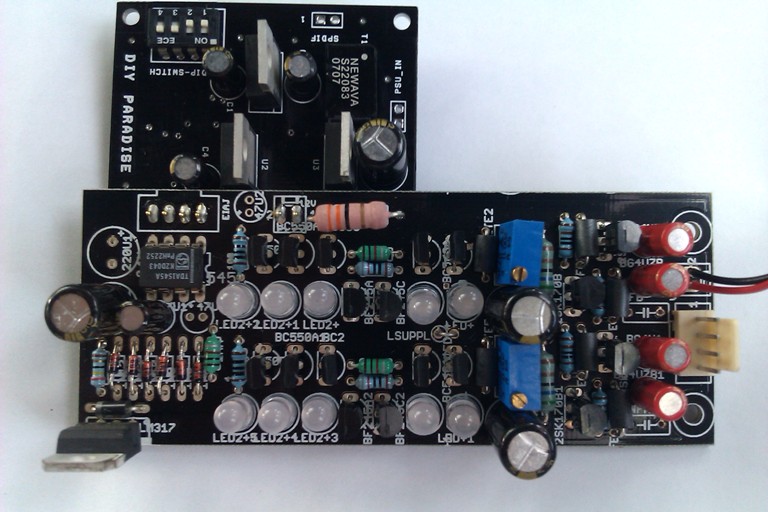

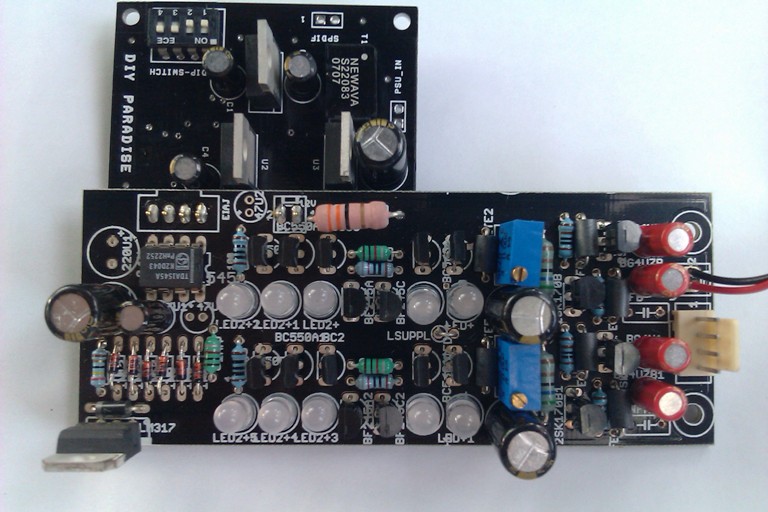
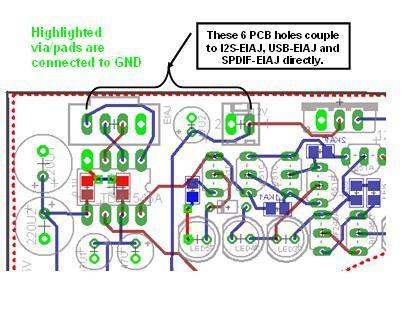
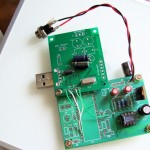
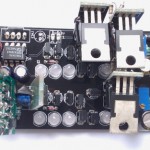


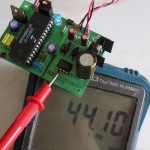
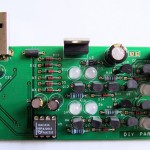
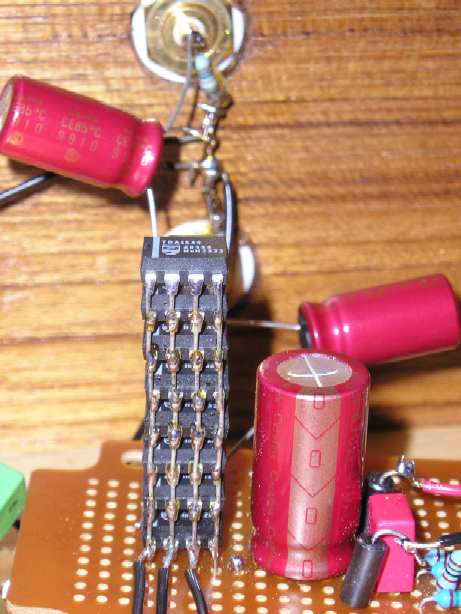
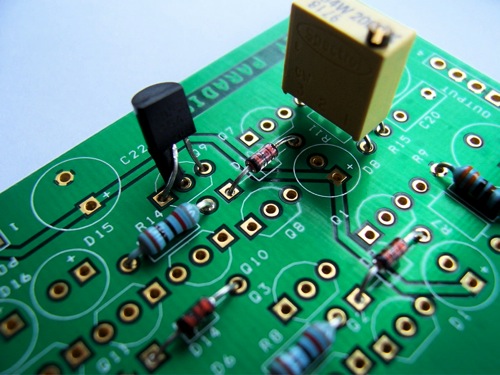
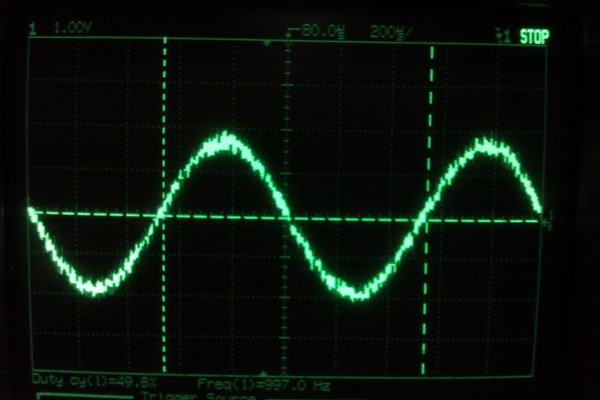
Completely agree ! I2S is the most capable interface.
Isolation and low DPC latency is the key to good USB performance. It’s also worth mentioning that I recently tried USB 3.0 and this seems to be a little better than the USB 2.0 ports.
Best PC solution ? PCI-E to I2S ?
Also agree that I2S is the best to do. I’ve made a TDA1543 Dac with the Rudolf Broertjes IVoutput stage. Feed it I2S from the QA550 Waveplayer and there you go.
Far out the best i’ve heard till now.
Hi Yeo, personnally I think the well buffered USB to EIAJ (black crow)is the best current way to go for most users with PC. Ideally I think the black crow is sitting directly at the USB connector of the PC. Agree??
hi jochen
black crow is an i2s to eiaj convertor. it buffers data, bclk and ws lines but ignores mclk line.
if you want to play from pc, you still need a usb to i2s solution. from there you could use black crow to convert to eiaj and then feed tda1545.
yeo